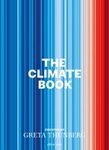By: Lennart Bengtsson(Editor), Symeon Koumoutsaris(Editor), Roger-Maurice Bonnet(Editor), Richard P Allan(Editor), Claus Fröhlich(Editor), Jost Heintzenberg(Editor), Paul Ingmann(Editor), Robert Kandel(Editor), Norman G Loeb(Editor), Brian Soden(Editor), Kevin E Trenberth(Editor)
492 pages, 155 colour & 10 b/w illustrations
![Observing and Modeling Earth's Energy Flows Observing and Modeling Earth's Energy Flows]()
Click to have a closer look
About this book
Contents
Customer reviews
Related titles
About this book
Reprinted from Surveys in Geophysics 33: 3-4 (2012)
Observing and Modeling Earth's Energy Flows provides a comprehensive presentation of Earth's energy flows and their consequences for the climate. The Earth's climate as well as planetary climates in general, are broadly controlled by three fundamental parameters; the solar irradiance, the planetary albedo and the planetary emissivity. Space measurements indicate that these three quantities are remarkably stable. A minor decrease in atmospheric emissivity is consistent with theoretical calculations.
This is due to the ongoing increase of atmospheric greenhouse gases making the atmosphere more opaque to long wave terrestrial radiation. As a consequence radiation processes are slightly out of balance as less heat is leaving the Earth in the form of thermal radiation than the incoming amount of heat from the sun. Present space based system can not yet measure this imbalance, but the effect can be inferred from the measurements of the increase of heat in the oceans. Minor amounts of heat are also used to melt ice and to warm the atmosphere and the surface of the Earth.
Observing and Modeling Earth's Energy Flows brings to fore the complexity of feedback processes of the Earth's climate system and in particular the way clouds and aerosols affect the energy balance both directly and indirectly through feed-back loops driven by the dynamics of atmospheric, ocean and land surface processes.
Observing and Modeling Earth's Energy Flows highlights recent scientific progress as well as remaining challenges.
Contents
- Earth's Energy Flows
- Solar forcing
- The role of water vapour
- The role of clouds
- Aerosol Forcing
- Climate Feedback
- Future Challenges
Customer Reviews
By: Lennart Bengtsson(Editor), Symeon Koumoutsaris(Editor), Roger-Maurice Bonnet(Editor), Richard P Allan(Editor), Claus Fröhlich(Editor), Jost Heintzenberg(Editor), Paul Ingmann(Editor), Robert Kandel(Editor), Norman G Loeb(Editor), Brian Soden(Editor), Kevin E Trenberth(Editor)
492 pages, 155 colour & 10 b/w illustrations



































